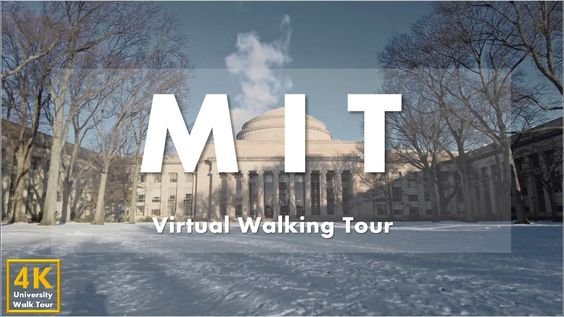Introduction
The Massachusetts Institute of Technology (MIT) is more than just a top-ranking university; it is a beacon of innovation and excellence in higher education. Founded in 1861, MIT has consistently been at the forefront of technological advancement, research, and education. In this article, we’ll delve into the rich history, academic strengths, research contributions, and unique aspects of MIT that make it stand out globally.
1. History and Evolution of MIT
1.1. Founding and Early Years
MIT was established in response to the industrial revolution’s demand for a practical and scientifically rigorous education. The institute’s founders, including William Barton Rogers, envisioned a new type of institution that would focus on combining theory with real-world applications. MIT’s first classes began in 1865, setting the stage for its future as a leader in technical education.
1.2. Expansion and Growth
Throughout the 20th century, MIT expanded both its physical campus and its academic offerings. The introduction of new departments, such as the Computer Science and Artificial Intelligence Laboratory (CSAIL), and the establishment of research centers cemented MIT’s reputation as a hub of innovation.
2. Academic Excellence at MIT
2.1. Undergraduate Programs
MIT’s undergraduate programs are renowned for their rigor and depth. Students can choose from a variety of disciplines, with particular strengths in engineering, computer science, and the natural sciences. The emphasis on hands-on learning and problem-solving equips students with practical skills and knowledge.
2.1.1. Curriculum and Teaching Methods
MIT’s curriculum is designed to challenge students and encourage critical thinking. The “MIT Model” incorporates problem sets, laboratory work, and collaborative projects, fostering a learning environment that balances theoretical knowledge with practical application.
2.2. Graduate and Doctoral Programs
MIT’s graduate and doctoral programs are equally distinguished. The institute offers advanced degrees in a wide range of fields, including engineering, management, and humanities. Graduate students benefit from working with leading experts and having access to cutting-edge research facilities.
2.2.1. Research Opportunities
Graduate students at MIT have numerous opportunities to engage in groundbreaking research. The institute supports a wide array of research initiatives, from biotechnology to sustainable energy, allowing students to contribute to significant scientific advancements.
3. Research and Innovation at MIT
3.1. Notable Research Labs and Centers
MIT is home to several renowned research labs and centers, including:
- CSAIL (Computer Science and Artificial Intelligence Laboratory): A leader in AI and robotics research.
- MIT Media Lab: Focuses on the intersection of technology, multimedia, and design.
- Lincoln Laboratory: Specializes in advanced technology and national security.
3.2. Impactful Innovations
MIT has been the birthplace of numerous technological innovations. Examples include developments in semiconductor technology, advancements in artificial intelligence, and pioneering work in renewable energy technologies.
4. Campus Life and Community
4.1. Campus Facilities
MIT’s campus, located along the Charles River, is equipped with state-of-the-art facilities. Key landmarks include the Great Dome, the Stata Center, and the MIT Museum. The campus environment fosters a vibrant academic community.
4.2. Student Organizations and Activities
Students at MIT are involved in a variety of extracurricular activities. From tech clubs to performing arts groups, there’s something for everyone. MIT’s culture of innovation extends beyond the classroom, with numerous student-led projects and organizations.
5. Global Impact and Alumni
5.1. Contributions to Society
MIT’s research and innovations have had a profound impact on society. The institute’s work in fields like medicine, engineering, and environmental science continues to address global challenges and improve quality of life.
5.2. Notable Alumni
MIT’s alumni network includes influential figures such as Nobel laureates, CEOs, and astronauts. Notable alumni include Kofi Annan, former Secretary-General of the United Nations, and Ray Kurzweil, a leading futurist and inventor.
6. Admissions and Financial Aid
6.1. Admissions Process
MIT is known for its highly selective admissions process. The institute looks for students with exceptional academic records, intellectual curiosity, and a passion for problem-solving. The application process includes standardized tests, essays, and interviews.
6.2. Financial Aid
MIT is committed to making education accessible to all qualified students. The institute offers need-based financial aid and works to ensure that financial considerations do not hinder a student’s ability to attend.
7. Future Directions and Challenges
7.1. Embracing Emerging Technologies
MIT continues to explore new frontiers in technology, including quantum computing, biotechnology, and sustainable energy. The institute’s focus on emerging technologies ensures that it remains at the cutting edge of innovation.
7.2. Addressing Global Challenges
MIT is actively engaged in addressing global challenges such as climate change, public health, and cybersecurity. The institute’s interdisciplinary approach aims to find solutions to complex problems facing the world today.
Conclusion
The Massachusetts Institute of Technology (MIT) is a world leader in education, research, and innovation. Its rich history, academic excellence, and commitment to addressing global challenges make it a premier institution for students and researchers alike. MIT’s impact on technology and society continues to shape the future, reinforcing its position as a beacon of knowledge and innovation.
FAQs
1. What makes MIT different from other top universities?
MIT’s emphasis on integrating theory with practical application, its strong focus on technology and engineering, and its culture of innovation set it apart from other top universities.
2. How competitive is the admissions process at MIT?
MIT is highly competitive, with a rigorous admissions process that evaluates academic performance, extracurricular achievements, and personal qualities.
3. What types of financial aid are available at MIT?
MIT offers need-based financial aid and works to ensure that financial considerations do not prevent qualified students from attending.
4. How can students get involved in research at MIT?
Students can engage in research through various labs and centers, participate in research projects, and collaborate with faculty members on cutting-edge initiatives.
5. What are some notable achievements of MIT alumni?
MIT alumni have achieved significant milestones, including Nobel Prizes, groundbreaking inventions, and leadership roles in major organizations.
